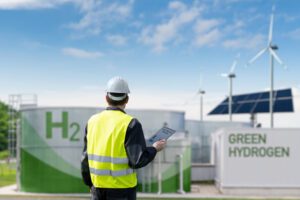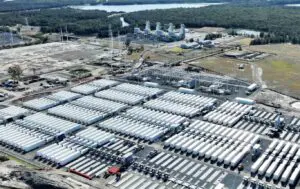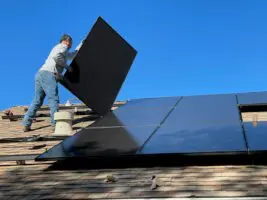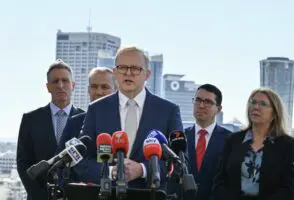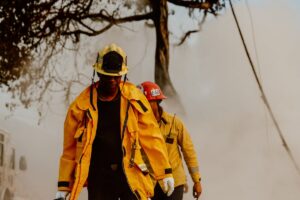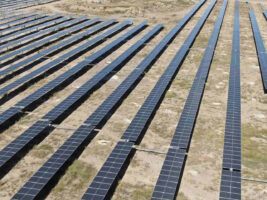The NSW Department of Planning and Environment has opposed the granting of development approval for the Crookwell 3 Wind Farm after receiving submissions raising visual and noise concerns about the project.
In a decisions that involves – directly and indirectly – some of the major protagonists in the debate about siting wind farms, the project will now be considered by the Independent Planning Commission for NSW, but the Department has recommended that the commission refuse development approval.
In recommending the project be rejected, the Department said that it did not think the project was necessary to meet State and Federal targets for renewable energy and emissions reductions, even though the NSW Government does not currently have a target for renewable energy.
The NSW Government released a new NSW Wind Energy Framework in 2016, which placed stricter rules on the positioning of wind turbines and requires planners to take into account the visual impacts of a wind farm.
Local land holder Matthew Donoghue, who would have hosted part of Crookwell Stage 3 and who had worked on the construction of Stage 2, told RenewEconomy that it is ultimately the community that loses out.
“Everyone is a loser here. If you start with the developer, they don’t get to finish the second half of their project, this extends to their suppliers, and the workers in the region that would have worked on the construction of the project. Through to me as a landholder and the wider community and a lost opportunity to further decarbonise the electricity sector,” Donoghue said.
This disappointment was echoed by the Australian Wind Alliance, which was optimistic that the project developers would be able to respond to the setback.
“It is very disappointing to see this project stalled. The fact that the Department recommended this project be approved in 2015 just highlights the difficulties industry has faced navigating the challenges of shifting government priorities.” Australian Wind Alliance national coordinator Andrew Bray told RenewEconomy.
“We look forward to seeing what the proponent can bring forward to resolve the issues the Department has raised.”
The NSW Department of Planning and Environment said that it had assessed the project in inline with community feedback.
“We considered this project on its merits, and our recommendation to refuse it draws on extensive community consultation and advice from an independent visual expert.” Mike Young, Executive Director of Resource Assessments for the Department said.
“There’s strong support for renewable energy in NSW and the Government is backing the industry’s development including with guidance on assessment of impacts, community engagement and more,” he said.
The Crookwell Wind Farm is located in the within the electorate of Federal Energy Minister Angus Taylor, who has been outspoken in opposition to wind farm developments, and did not attend the opening of the Crookwell 2 wind farm earlier this year, despite being the local member and the country’s energy minister.
Minister Taylor’s office said, however, that the minister had not engaged with the planning process. “Planning approval for these projects is a matter for the NSW Government. Taylor did not make a submission,” a spokesperson for Taylor said in an emailed statement.
One nearby resident is vocal wind farm opponent Maurice Newman, the former ABC and ASX chair who while serving on Tony Abbott’s Business Advisory Council called for the Renewable Energy Target to be scrapped. Newman’s wife has served as Chairwoman for the Crookwell District Landscape Guardians.
Stage 3 of the Crookwell Wind Farm would have been an extension of the existing Crookwell developments, with an additional 23 wind turbines.
The first stage of the Crookwell wind farm consists of eight turbines, with an additional 32 wind turbines for Crookwell Stage 2, where the third stage would also have been located.
The NSW Southern and Central Tablelands have excellent wind resource availability and has attracted significant investment in wind generation. There are currently seven operational wind farms in the region, despite long term opposition from Taylor and the former local state member Pru Goward.
In recommending the project be blocked, the NSW Department of Planning and Environment cited opposition from three “special interest groups”, the Parkesbourne-Mummel Landscape Guardians, the Crookwell District Landscape Guardians and NSW Landscape Guardians.
All three of the “Landscape Guardians” have voiced opposition to numerous wind farm developments in the region, and have been linked to other anti-wind farm groups, such as the Waubra Foundation.
The Crookwell region has been a target for anti-wind farm groups, who have raised fears about the visual and noise impacts of the wind farms, often convincing residents who live in the vicinity of a project to voice opposition.
The Department of Planning and Environment received 81 submissions from members of the community in response to the planning request for Crookwell 3. The majority of these submissions voiced support for the wind farm.
However, the department noted that 15 of 18 submissions from residents located within 5km of the wind farm were opposed to the wind farm.
In response to community concerns about the location of the wind turbines, project developer, Global Power Generation Australia amended the plan for Crookwell 3, reducing the number of turbines to be constructed.
“We acknowledge the proponent has made changes to reduce impacts and has reached agreement with a number of landowners, but our independent visual expert has advised there would still be significant visual impacts on up to 27 residences.” Young said.
The National Wind Farm Commissioner confirmed that it had not been directly engaged in the planning process, nor had it received any formal complaints about the Crookwell 3 development.
If approved, Crookwell Stage 3 would see the construction of 96MW of wind generation capacity, generating $120 million of investment in the region and the creation of 40 jobs during the construction phase.


